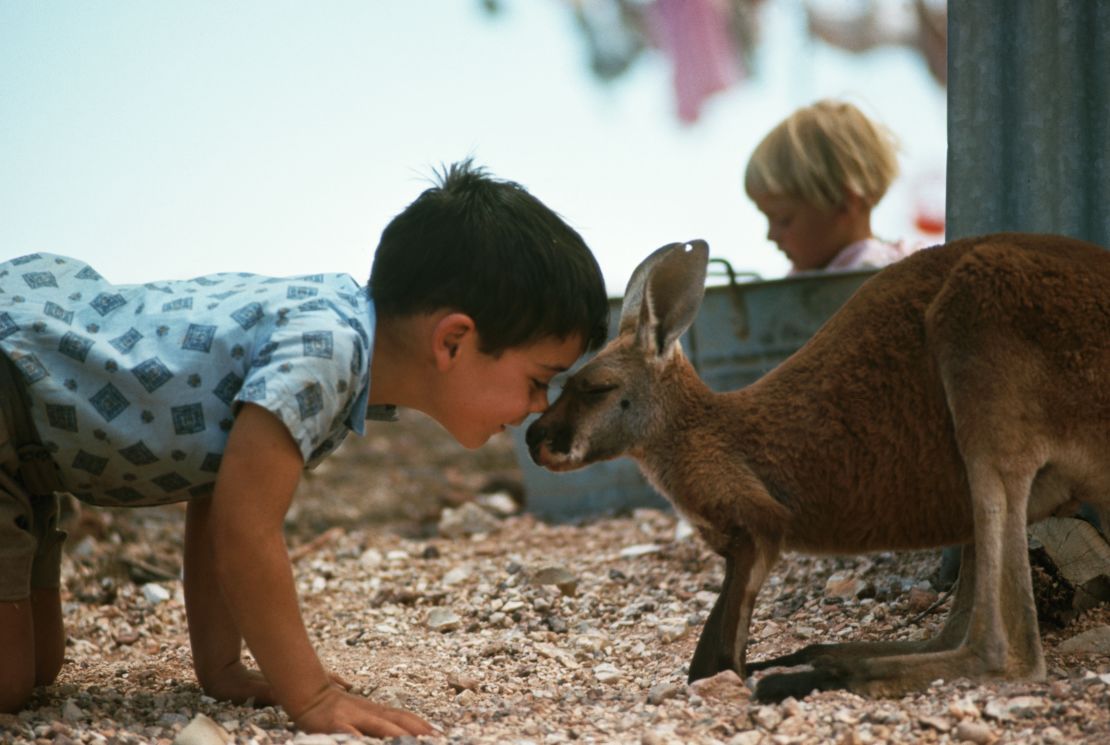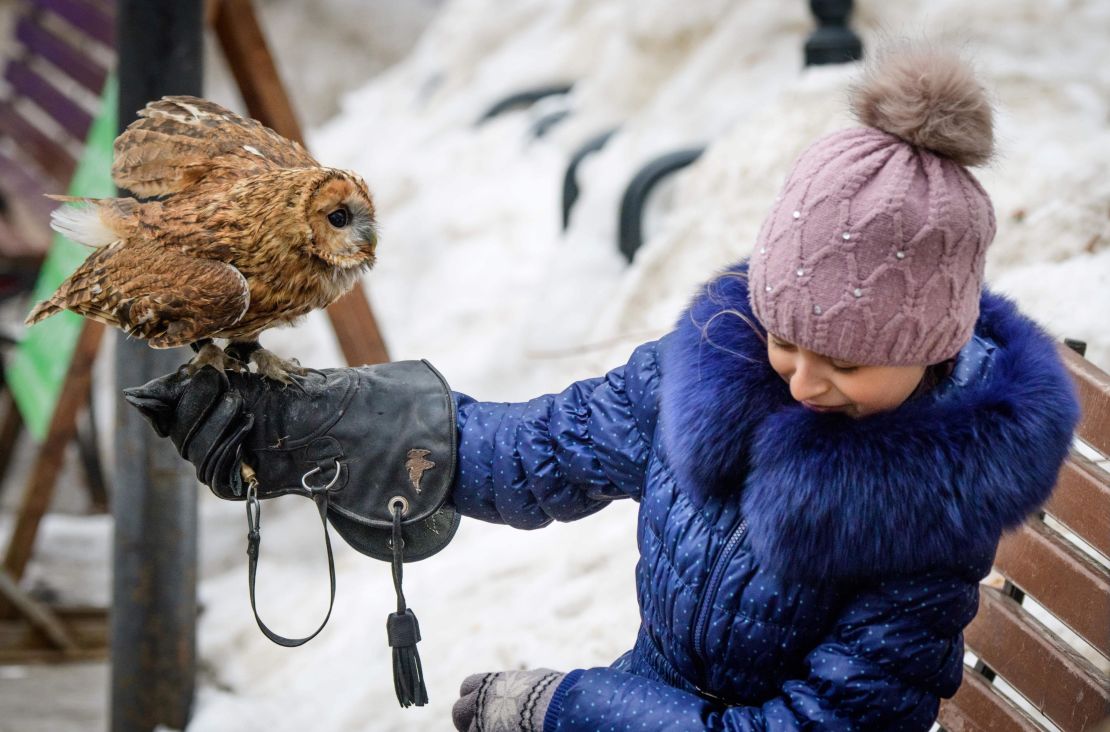Story highlights
The types of creatures children grow up with can depend on where they live
Here is just a sampling of pets around the world, such as bunnies, birds, and beetles
The man had desperation in his eyes while his three children held an ailing puppy in their arms. At that moment, Sean Owens knew that he had to help.
Owens, a veterinarian and professor of clinical pathology in the School of Veterinary Medicine at the University of California, Davis, was doing volunteer work in the Baja region of Mexico in 2014 when the man came to him in hopes Owens could treat his children’s sick puppy.

“His family had a special bond with this animal, especially their kids. The father looked at me, and the look he gave – without us speaking Spanish together – basically said, ‘I love my children; my child loves this dog; what can you do?’ ” Owens said.
“I realized that the puppy had parvovirus, which tends to be fatal if you don’t have a thousand dollars or more to treat the animal in a hospital,” he said. “So we started an IV. I gave the dog antibiotics, and I gave it fluids. I sent it home with them, and I came back for three days in a row, and we treated it. The puppy lived.”
A few years later, during another trip to Mexico, Owens saw that father again.
“It’s a small town where we are, and he came over – still I spoke very little Spanish; he spoke very little English – and he reached out and shook my hand. He had tears in his eyes,” Owens said. “This was a hard-core farmer guy, salt of the earth guy, not the kind of guy who cries. He’s almost like an American cowboy figure, and he said, ‘gracias.’ He said ‘thank you’ in Spanish, and I thanked him as well.”
Families, like that man’s in Mexico, can develop a special kind of bond with the animals in their lives, but the type of animals in a household can vary, depending on where the family lives.
Of course, state by state and country by country, there are also rules and regulations governing the types of animals families can integrate into their homes, both for the family’s and animal’s safety and well-being and for the local environment if the animal somehow enters the wild.
Here is a sampling of the animals that some children around the world grow up with.
Crickets in China and rabbits on the rise
“Having goldfish are very common around the world, or koi, freshwater fish. People have, to a certain extent, birds and reptiles and beetles are popular in Japan as sort of a trendy animal,” Owens said.
In particular, stag beetle collections fuel a large and lucrative market in Japan, involving more than 700 species from all over the world, with more than 15 million specimens imported a year, according to a study published in the journal Biodiversity and Conservation in 2012.
In certain regions of Australia, wallabies may become part of a family if the animal needs care as a victim of a road accident or dog attack, or as an orphan of such events. Often, a permit is required to care for such injured or rescued wildlife.
One study published in the journal Frontiers in Veterinary Science in 2016 found that the agile wallaby, or Macropus agilis, was suitable to be kept as a pet.
The study analyzed behavioral needs, welfare, human relationship risks and overall “pet suitability” among 90 wild mammal species selected based on data from vet visits, petting zoos, animal shelters and rescue centers in the Netherlands.
Of those species, the following were judged suitable to be kept as a pet: Sika deer, agile wallaby, tammar wallaby, llama and Asian palm civet, the study found.

“In China, people have crickets. Wherever you go, in restaurants and places like that, people will have these little cricket cages, and they’re seen as good luck,” he said. “But they’re not traditional pets, and all the kids that have been exposed to contemporary and popular media all want dogs and cats like we do.”
Globally, ownership of pet rabbits appears to be on the rise – something that emerged in the late 20th century when rabbits began to be more commonly kept as indoor companions.
In the United Kingdom, 24% of households own pet dogs, 17% own cats, 8% indoor fish, 2% rabbits, 2% guinea pigs, 1.5% reptiles, 1% domestic fowl and 1% hamsters, according to 2017 data from the UK Pet Food Manufacturers Association.
An estimated 800,000 domestic rabbits are kept as companions in 2% of the world’s homes, making them the third – without including fish – most common pet companion animal after dogs and cats, according to a study published last year in the Journal of Applied Animal Welfare Science.

In the United States, 36.5% of households own dogs, 30.4% own cats, 3.1% own birds and 1.5% horses, according to the latest pet ownership data from the American Veterinary Medical Association, published in 2012.
According to those data, in 2011, about six out of 10 pet owners, or 63.2%, considered their pets to be family members.
“I’ve seen parents come in with their kids, when I was in practice, and I’d watch the children play on the exam room floor with their dog or cat. They would tell me the dog or cat’s name. I would hear a story about them, and those were magical exam visits, because you’d see a child light up,” Owens said.
Furry friends as status symbols
In other parts of the world – including many Central American, Caribbean, Middle Eastern, European and African nations – cats and dogs are not as common in children’s homes as they are roaming the streets. Therefore, owning a pet is more of a luxury.
In Istanbul, for instance, estimates for the numbers of street dogs range from 70,000 to 150,000. Meanwhile, in India, there are 25 million stray dogs.
Sometimes, street dogs can pass diseases, which has become a global public health concern. An estimated 59,000 people die from rabies around the world each year, with about 90% of these deaths occurring among children living in rural areas in Africa and Asia, according to the World Health Organization. It published new guidelines last month on rabies prevention, control and elimination with the help of immunizations.
“The US culture and the way in which we grow up with dogs and cats and traditional pets is very, very different than the rest of the world,” Owens said, adding that when dogs do become part of a family, oftentimes, it can be for protection.
A former veterinary resident from Uganda whom Owens taught at the UC Davis teaching hospital told Owens how the concept of a “good dog” differs dramatically in the United States compared with in his home country.
“He said in Uganda, a good dog is a mean dog that’s on your property, doesn’t bite you but bites other people who try to steal your stuff,” Owens said. “Here, a good dog is a dog who doesn’t bite anybody.”
Overall, in many countries, “resources are scarce, and it’s a challenge to provide the level of care that the people need and the animals need,” Owens said. For some families who can afford pets for their children, having a dog or cat can be something of a status symbol.
“You can look at countries like China, where the veterinary market there is exploding because the middle class now has enough resources to be able to purchase pets,” he said. “If you have a dog, it suggests that you not only have enough money to take care of yourself, but now you have enough money to take care of something that sort of is an extravagance.”
How to prepare for a family pet
The American Academy of Pediatrics offers some precautions to take before getting a pet as a companion for your child and suggests waiting until your child is mature enough to handle and care for the animal.
The precautions also include looking for a pet with a gentle disposition, never leaving a young child alone with an animal, teaching children not to put their faces too close to the animal, not allowing children to tease the pet by pulling its tail or taking away its toys or bone, and making sure your pet is immunized against rabies.
The academy also notes to make sure your child doesn’t disturb the animal when it’s sleeping or eating.
If your child has been begging for a dog, “with a grain of salt, read about different breeds. There are some animals that are better with children than others,” said Bernard Rollin, distinguished professor of philosophy, biomedical sciences and animal sciences at Colorado State University.
He added that parents thinking about a pet for their children should consider adopting from shelters.
Join the conversation
“In some ways, there’s a big debate about whether you should adopt a puppy or an older dog, and there are advantages to both. If you adopt a puppy, you’ve got to housebreak, you have to train, et cetera. On the other hand, you get to mold that dog a little bit more,” Rollins said.
“When you adopt an adult dog, you’re getting a package you don’t necessarily know what’s inside, but you don’t have to house train and so forth, and a lot of shelters have the previous owner write up a detailed account of that dog,” he said. “The bottom line is, there are so many wonderful animals in shelters.”






